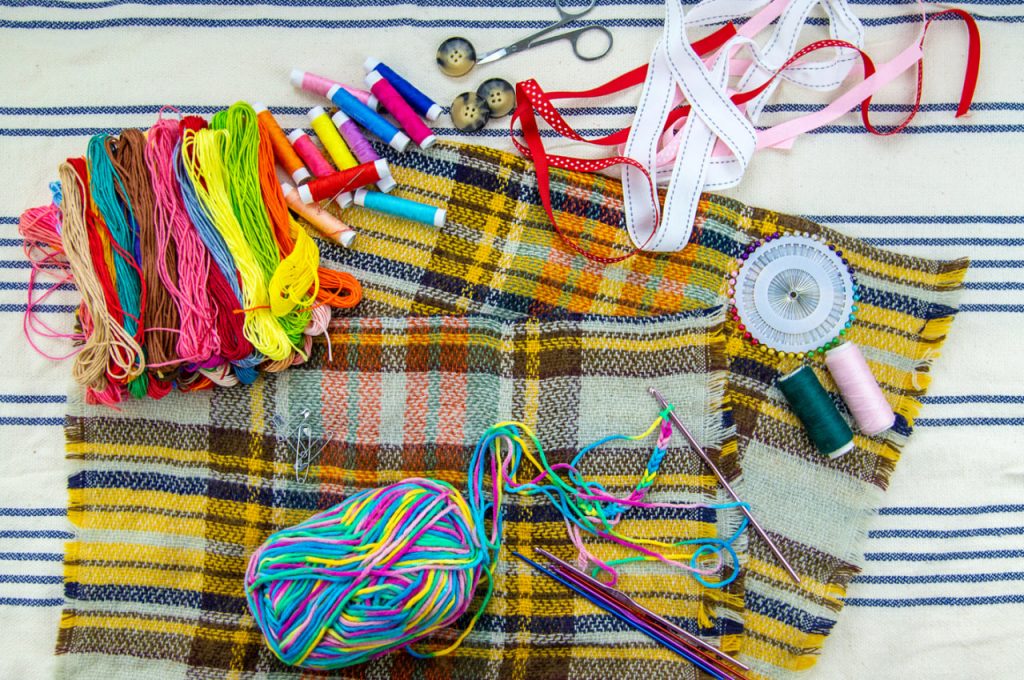Handmade textile projects are not only a testament to your creativity and skill but also carry a personal touch that makes them irreplaceable. Whether you’ve sewn a quilt, crafted a piece of embroidery, or created a handwoven rug, taking proper care of these items ensures that they last for years to come. After all, the beauty of handmade textiles lies not just in their creation, but in how they evolve over time and the memories they help create.
However, textile crafts, especially those made with delicate fabrics, require thoughtful maintenance. Different materials, techniques, and finishes all need specific care. In this blog, we’ll explore essential tips and practices to help you preserve and care for your handmade textile projects, so they stay beautiful and durable for years.
1. Know Your Fabric: Understand the Material’s Needs
The first step in caring for your handmade textile project is understanding the material you’ve worked with. Fabrics behave differently, and each type requires unique care to maintain its quality. Whether you’re dealing with natural fibers like cotton or wool or synthetic fibers like polyester, knowing what your fabric needs can make all the difference in extending the life of your project.
Natural Fabrics:
- Cotton: Cotton is breathable and durable but can shrink if washed in hot water. Always wash cotton projects in cold or lukewarm water to prevent shrinkage. Air-drying is also a good idea, as high heat from dryers can weaken cotton fibers over time.
- Linen: Linen, made from flax, wrinkles easily but also becomes softer and more beautiful with age. To keep linen projects in good shape, avoid using fabric softeners, as they can affect its natural texture. Iron while damp to avoid excessive wrinkling, or embrace the wrinkles as part of its charm!
- Wool: Wool is naturally resistant to dirt and wrinkles, but it can shrink easily if not cared for properly. Always wash wool by hand or in a gentle cycle using cool water. Use a mild wool detergent, and avoid wringing or twisting it to remove water. Lay flat to dry to retain its shape.
- Silk: Silk is a delicate fiber that requires extra care. Hand wash silk in cold water with a mild detergent, and avoid direct sunlight to prevent fading. Silk projects should always be air-dried or dried flat to avoid any damage.
Synthetic Fabrics:
- Polyester: Polyester is quite durable and easy to care for, but it can retain odors. Wash polyester fabrics with a mild detergent and avoid fabric softeners, which can coat the fibers. It’s best to tumble dry on a low setting, as high heat can damage synthetic fibers over time.
- Nylon/Spandex: These synthetic fabrics are stretchy and durable but should be washed in cold water and air-dried to avoid overstretching. Don’t use bleach or harsh chemicals, as they can degrade the fabric over time.
Eco-Friendly Tip:
When selecting fabrics for future projects, opt for natural and biodegradable fibers, which are less likely to harm the environment. Organic cotton, bamboo, and hemp are all sustainable choices that can be more easily cared for and disposed of.
2. Washing Your Handmade Items: The Right Way
Many handmade textile projects, such as clothing or accessories, need to be washed regularly to maintain their appearance and cleanliness. However, improper washing can cause fading, shrinking, or even damage to delicate fibers. Here’s how to wash your handmade pieces carefully.
General Washing Tips:
- Gentle Cycle: Always use the gentle cycle on your washing machine to minimize wear and tear. This is especially important for items made from delicate fabrics or with intricate stitching.
- Handwashing: For more delicate projects, handwashing is often the safest option. Fill a basin with cold or lukewarm water, add a mild detergent, and gently agitate the fabric. Avoid scrubbing or twisting, as this can distort the fibers and stitching.
- Laundry Bags: For items like embroidered pieces or small fabric projects, use a mesh laundry bag to protect them from snagging or tangling with other items.
Special Care for Specific Projects:
- Quilts: Quilts should be washed with care, especially if they contain delicate fabrics or hand-stitched elements. Machine wash on a gentle cycle, preferably in a front-loading machine, and dry on a low-heat setting. If the quilt has hand quilting, air drying or laying it flat to dry is recommended.
- Embroidery: For embroidered items, avoid scrubbing the embroidered areas directly. Instead, gently wash the fabric around the stitches. Use a mild detergent, and never bleach embroidered projects, as this can damage the delicate threads.
3. Ironing and Steaming: Maintaining the Shape and Structure
Ironing is an essential part of textile care, as it helps maintain the crisp appearance and structure of your handmade items. However, improper ironing can damage the fibers or alter the design, so it’s important to know how to do it properly.
Ironing Tips:
- Low Heat for Delicate Fabrics: Always start with the lowest heat setting when ironing delicate fabrics like silk or wool. High heat can scorch or burn the fabric, ruining its appearance. Use a pressing cloth between the iron and fabric to protect the fibers.
- Steam for Wrinkles: Steam can be a more gentle way to remove wrinkles, especially for fabrics like linen or cotton. Hold the iron a few inches above the fabric and use the steam function to ease out wrinkles without making direct contact.
- Avoid Ironing Over Embroidery or Prints: If you’ve worked with embroidered projects, avoid ironing directly over the stitches. Instead, turn the item inside out and iron on the reverse side to protect the delicate thread work.
4. Storing Handmade Textiles: Keep Them Safe for the Long Haul
Proper storage is crucial to preserving your handmade textile projects. Whether you’re storing quilts, clothing, or other handmade pieces, the way you store them can impact their longevity.
Storing Tips:
- Keep in a Cool, Dry Place: Store your textiles in a cool, dry environment. Excessive heat and humidity can cause fabrics to degrade or mold over time. Avoid storing your projects in damp basements or attics with fluctuating temperatures.
- Avoid Direct Sunlight: UV rays can cause fabrics to fade, especially for natural fibers like cotton, silk, and wool. Store your handmade textiles away from direct sunlight or use garment bags or storage containers to protect them from light exposure.
- Use Acid-Free Tissue Paper: When storing quilts, delicate clothing, or other textiles, use acid-free tissue paper to help maintain their shape and prevent any fabric from yellowing or deteriorating. Gently fold items with the tissue paper to minimize creases.
- Garment Bags: For clothing items, use breathable garment bags to protect them from dust, dirt, and pests. Avoid plastic bags, as they can trap moisture and lead to mildew or yellowing.
Special Storage Considerations:
- For Quilts: Roll quilts rather than folding them to prevent creases from forming. If you’re storing quilts in a box, make sure it’s large enough to avoid compressing the fabric too much.
- For Knit Items: Wool or knit items should be stored flat to avoid stretching out the fibers. Avoid hanging them, as this can distort their shape over time.
5. Repairing and Refreshing Your Handmade Projects
Even with the best care, your handmade items may eventually need repairs or a little refreshing. Regularly inspecting and mending your projects will help extend their life and keep them looking their best.
Repairing Tips:
- Patch Holes and Tears: Small tears or holes can be patched using fabric scraps or embroidery techniques. For delicate fabrics like silk or wool, use a fine needle and thread to invisibly mend small holes.
- Reinforce Stitching: If the stitching on a project begins to unravel or weaken, reinforce it with a simple running stitch or backstitch. This is especially important for high-stress areas like seams or edges.
- Clean and Re-dye: Over time, colors may fade due to washing or sun exposure. Consider re-dyeing fabrics with natural dyes or eco-friendly fabric dyes to refresh their appearance.
Refreshing Tips:
- Fabric Refreshers: Use eco-friendly fabric refreshers to eliminate odors without harming your handmade items. Alternatively, hanging your projects outside on a dry day can help freshen them up naturally.
- Reblocking Knits: If your knitted items have become misshapen, consider re-blocking them by wetting the fabric and gently stretching it back into shape. Lay it flat to dry to avoid any distortion.

